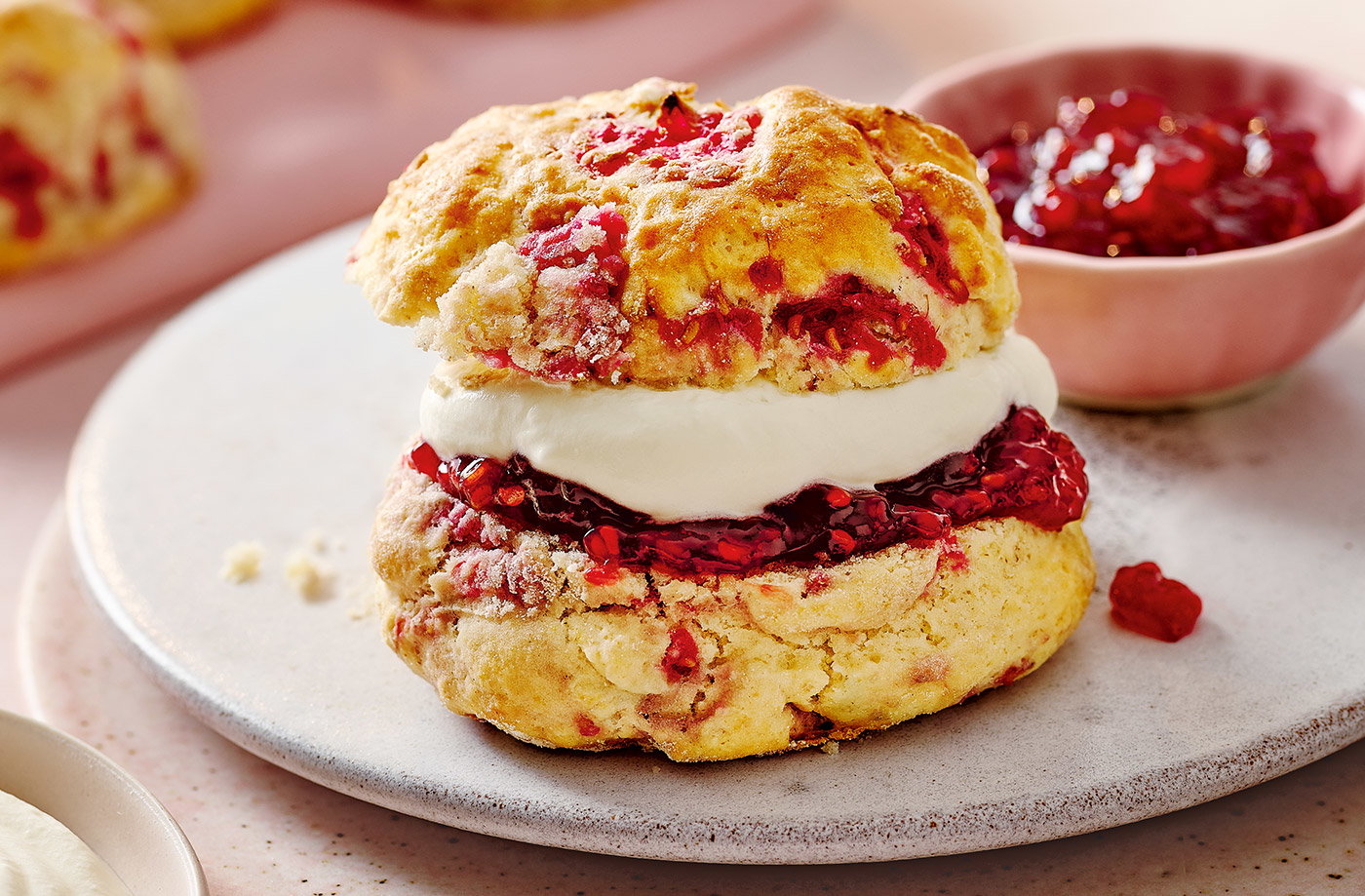
35 interesting facts about scones
- 👁️ 450
Scones, a quintessential part of the British tea time experience, have evolved from simple oatcakes of Scotland to a beloved treat enjoyed worldwide. These small, lightly sweetened pastries are traditionally paired with clotted cream and jam during afternoon tea. The scone’s simple ingredients and versatility have made it a popular snack in many cultures, adapting flavors and presentations. Whether enjoyed plain, sweetened, or savory, scones bring a touch of comfort and tradition to the table, making them more than just a food item but a culinary ritual cherished across generations.
- Scones originated in Scotland in the early 1500s.
- Originally, scones were made with oats and baked on a griddle.
- The word “scone” might come from the Stone of Destiny where Scottish kings were crowned.
- Scones became popular and an essential part of the fashionable afternoon tea in England during the 1840s when Anna, the Duchess of Bedford, enjoyed them.
- Traditional scones have plain, raisin, and currant varieties.
- In Scotland, scones are often served with butter and jam, and sometimes clotted cream.
- The correct pronunciation of “scone” can rhyme with either “gone” or “bone,” varying by region in the UK.
- Scones can be sweet or savory, with cheese scones being a popular savory variant.
- Ingredients typically include flour, butter, sugar, milk, baking powder, and eggs.
- The American version of the scone is often sweeter and richer than the British version.
- Scones were first mentioned in print in 1513.
- Freezing scone dough before baking can help them rise better.
- The ideal scone should be light and fluffy with a slight crumb.
- Coffee shops and bakeries often feature scones with glazes or icings.
- In Utah, USA, scones refer to a fried bread, quite different from the baked British version.
- Pumpkin scones are a popular variation in the United States during the fall.
- The largest scone ever made weighed 119.45 kilograms (263.3 lbs) and was achieved in the UK in 2011.
- Scone recipes can be easily adapted to include fruits, nuts, or spices.
- Blueberry scones are a popular variant in North America.
- In Australia, scones are a common part of school fundraising events and local fairs.
- Some people prefer using buttermilk instead of regular milk for richer flavor and texture.
- Lemonade scones, made with lemonade and cream, are a quick Australian recipe variation.
- The classic scone served with tea is often a part of the cream tea service in the UK.
- During World War II, scones were made using powdered eggs and margarine due to rationing.
- Some bakers brush the tops of scones with egg wash or milk before baking for a golden finish.
- Vegan scones are made without dairy or eggs, using plant-based substitutes.
- Cheese and chive is a popular flavor combination for savory scones.
- In Cornwall, scones are traditionally served with Cornish clotted cream.
- Some culinary schools hold competitions for creating innovative scone recipes.
- Scones can be made using gluten-free flour for those with dietary restrictions.
- In 2013, a survey found that the cream-first method of serving scones is preferred in Cornwall, whereas the jam-first method is favored in Devon.
- The texture of a scone can vary from dense and heavy to light and airy, depending on the recipe and handling of the dough.
- Holiday-themed scones, like cranberry-orange for Christmas, are popular seasonal treats.
- Scones are often a popular item in bridal showers and baby showers in North America.
- The rise of café culture has popularized scones as a coffee accompaniment worldwide.
Scones embody a rich tradition that has transcended their origins to become a beloved snack around the globe. They serve not just as a staple of afternoon tea but as a versatile treat that can adapt to any flavor profile, from sweet to savory. The simple pleasure of a warm scone, whether topped with jam and cream or enjoyed plain, continues to delight taste buds and evoke a sense of comfort and nostalgia. As scones continue to evolve, they remain a testament to the timeless appeal of simple, well-made baked goods.
Scones, a quintessential part of the British tea time experience, have evolved from simple oatcakes of Scotland to a beloved treat enjoyed worldwide. These small, lightly sweetened pastries are traditionally paired with clotted cream and jam during afternoon tea. The scone’s simple ingredients and versatility have made it a popular…